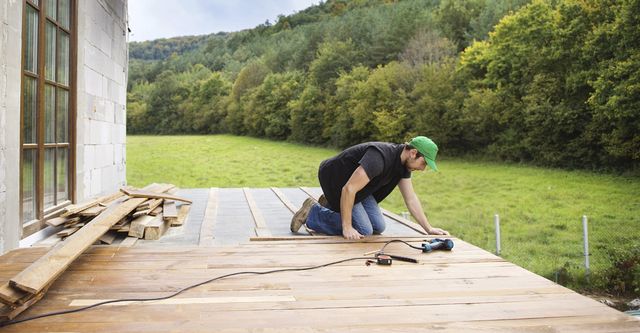Embarking on your first deck project can be an exciting yet daunting endeavor. Whether you’re a novice DIY enthusiast or a homeowner with little construction experience, proper planning and execution are essential for a successful outcome. From initial design considerations to final construction, this beginner’s guide will provide you with the step-by-step process to plan and execute a new deck project:
1. Define Your Goals and Budget:
Before diving into the planning process, take some time to define your goals and establish a realistic budget for your deck project. Consider how you plan to use the deck – whether it’s for outdoor dining, entertaining, or relaxation – and prioritize features and amenities accordingly. Determine the size, layout, and design aesthetic that best suits your needs and preferences, keeping in mind factors such as available space, local building codes, and environmental considerations.
2. Gather Inspiration and Ideas:
Explore various deck designs, styles, and materials to gather inspiration and ideas for your project. Browse home improvement magazines, websites, and social media platforms for photos, articles, and tutorials showcasing different deck designs and trends. Visit local home improvement stores, lumberyards, and decking suppliers to see materials up close and get a sense of what appeals to you aesthetically and functionally. Take note of design elements, features, and details that you’d like to incorporate into your own deck.
3. Determine the Deck Location and Size:
Evaluate your outdoor space and determine the ideal location and size for your deck. Consider factors such as sunlight exposure, views, privacy, and proximity to the house when selecting the site for your deck. Determine the dimensions and shape of your deck based on your goals, budget, and available space. Keep in mind the layout of your yard, existing landscaping, and any obstacles or features that may impact the design and construction of your deck.
4. Choose Deck Materials and Features:
Selecting the right materials and features for your deck is crucial for achieving your desired outcome. Consider factors such as durability, maintenance requirements, aesthetics, and budget when choosing decking materials, railings, stairs, and other components. Common options include pressure-treated lumber, composite decking, PVC decking, and various railing materials such as wood, metal, or glass. Choose features and amenities that enhance the functionality and appeal of your deck, such as built-in seating, lighting, and storage.
5. Create a Deck Design and Plan:
Once you have a clear vision and budget in mind, it’s time to create a detailed deck design and plan. Sketch out a rough layout and floor plan, indicating the size, shape, and placement of key elements such as the deck surface, stairs, railings, and any additional features or amenities. Use online deck design tools or consult with a professional Deck Builder New Jersey for assistance with creating a comprehensive design and plan that meets your needs and complies with local building codes.
6. Obtain Permits and Approvals:
Before you can start building your deck, you’ll need to obtain the necessary permits and approvals from your local building department or homeowner’s association. Check with your city or municipality to determine the specific requirements and regulations for deck construction in your area. Submit your deck plans, drawings, and permit application for review and approval, ensuring that your project complies with all applicable codes and standards. Allow sufficient time for the permitting process before beginning construction.
7. Gather Materials and Tools:
Once you have your design approved and permits in hand, it’s time to gather materials and tools for your deck construction. Select high-quality materials such as pressure-treated lumber, composite decking, or PVC decking that are suitable for outdoor use and capable of withstanding the elements. Invest in essential tools and equipment such as a circular saw, drill, level, tape measure, and safety gear to facilitate the construction process. Consider renting or borrowing specialized tools for specific tasks to save money and minimize waste.
8. Prepare the Site:
Prepare the construction site by clearing and leveling the area where your deck will be built. Remove any vegetation, debris, or obstacles that may interfere with the building process. Mark the layout of your deck according to your design plans, ensuring accurate dimensions and alignment. Take into account factors such as drainage, soil conditions, and accessibility when preparing the site for construction. Consider installing weed barrier fabric or gravel to prevent weed growth and improve drainage under the deck.
9. Build the Deck Frame:
Start by constructing the frame and substructure of your deck using pressure-treated lumber or other appropriate materials. Install footings or posts at regular intervals to support the weight of the deck and provide stability. Use joists, beams, and ledger boards to create a sturdy framework for the deck surface. Ensure that all components are level, square, and properly secured according to your design plans and local building codes. Consult with a structural engineer or Deck Builder New Jersey if you’re unsure about the structural integrity of your deck frame.
10. Install Decking Boards and Finish:
Once the frame is in place, it’s time to install the decking boards to create the surface of your deck. Choose decking materials that suit your budget, style, and maintenance preferences, and follow manufacturer guidelines for installation. Secure the decking boards to the joists using appropriate fasteners such as screws or nails, ensuring consistent spacing between boards for drainage and ventilation. Consider using hidden fastening systems for a clean and



